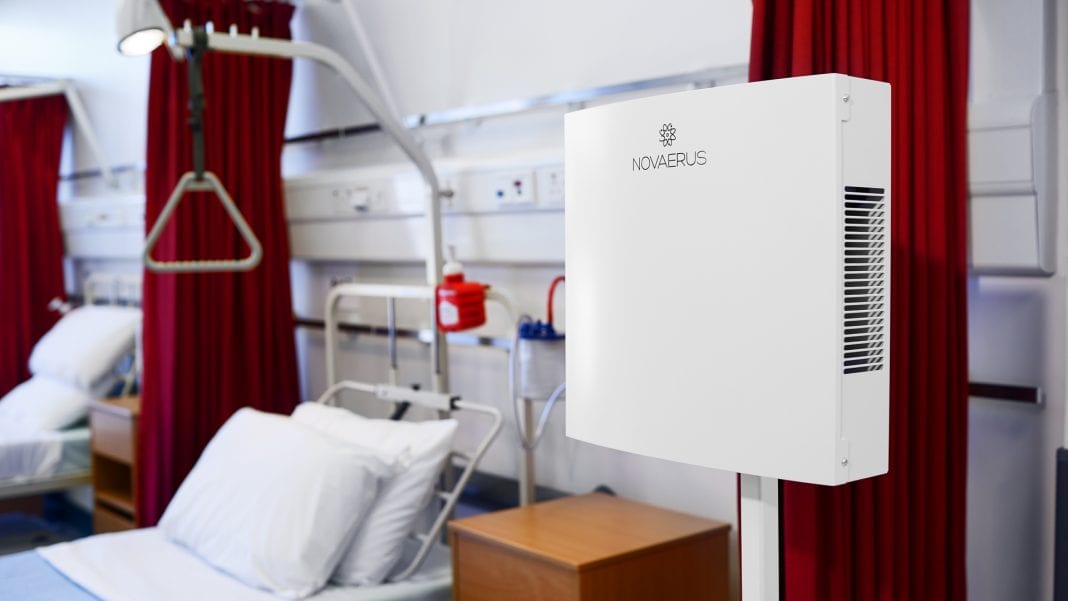Infections in Nursing Homes: An Expensive and Increasing Threat (Part 1)

Volumes have been written about the massive costs, human and financial, of the infection crisis facing hospitals worldwide.
Less attention has been paid to infection spread in nursing homes, “an unappreciated hazard” poised to worsen as the population ages and antimicrobial resistance increases.
Already 4.2 million healthcare-associated infections strike residents of long-term care facilities in Europe each year, in addition to 1.6 to 3.8 million such infections in the United States, resulting in 380,000 deaths.
Norovirus and influenza are on the rise at nursing homes, as are infections caused by antibiotic-resistant “superbugs” — particularly Methicillin-resistant Staphylococcus aureus (MRSA) and Clostridium difficile, now considered “endemic in nursing home facilities.”
“When there is an outbreak of a highly resistant microorganism, the duration will often be much longer than in a hospital setting, since patients are not leaving,” concluded Dutch microbiologists who analyzed 34 nursing-home MRSA outbreaks.
In the Dutch study, more than half the outbreaks lasted at least 100 days; six persisted for at least 11 months, including an outbreak that struck 79 patients and cost the nursing home € 975,000.
A German review found that, on average, nursing-home outbreaks lasted 163 days and cost €12,682.23. Additional staff, cleaning, bed linens, masks, caps, and gowns were among the numerous cost drivers.
The global infection crisis has put nursing homes in an especially difficult position: Compared to hospitals, these facilities care for patients more vulnerable to infection, in settings more conducive to pathogen spread —and with less capacity for isolation, smaller cleaning budgets, and less infection-control expertise.
“It is difficult to apply the practice of infection control in the hospital environment to the realities and practicalities of infection control in long-term care facilities,” asserts Donald Kaye, M.D., an infectious disease expert at Drexel University College of Medicine in the United States.
Nursing homes must forge their own path, adopting innovations in infection control that are both practical and cost-effective. As research shows, there is plenty nursing homes can do within their budgetary constraints, ranging from better antibiotic stewardship to the installation of air dis-infection technology.
In reality, nursing homes can’t afford not to act.
“Unless we can improve infection prevention and control in nursing homes, this problem is only going to get worse as the baby boomers age and people are able to live longer with increasingly complex, chronic diseases,” cautions Carolyn Herzig, director of a study on infection prevalence in U.S. nursing homes.
How Infections Spread at Nursing Homes
An aide forgets to wash her hands after delivering breakfast to in infected resident. A housekeeper cleans the wall with the same cloth used to wipe the toilet. A nurse doesn’t wash up after retrieving a medicine bottle that fell on the floor.
These are among the infection-control lapses observed by an inspector at a California nursing home, and they’re not uncommon. However, hand-to-hand and surface-to-hand transmission account for only part of the problem — the part that can be observed.
Airborne transmission of pathogens also plagues both nursing homes and hospitals. A sneeze or cough, even a conversation or an exhale, can propel dangerous microbes into the air. These invisible and virulent particles can hover for hours — in the dining hall, the lounge, the physical therapy room — before being inhaled or ingested by patients or settling on surfaces that patients touch.
And once pathogens have landed — on beds, clothing, walkers, wheelchairs — they can be stirred up and launched back into the air when, for example, sheets are changed, curtains are drawn, or doors are opened and closed.
In a University of Leeds study, the air surrounding 70% of infected C. difficile patients tested positive for the bacteria.
As an American researcher noted, “It is disconcerting to contemplate a ‘faecal cloud’ in healthcare settings.”
It’s especially disconcerting given the vulnerabilities of nursing-home residents.
“The average long-term care resident today is older, with higher case acuity and complexity than two decades ago and is thereby more vulnerable to infection,” American researchers have noted. About 37% of nursing home residents are age 85 or older.
In recent decades, hospital stays have shortened, from 7.3 days to 4.5 days. So, patients who would have recuperated in hospitals are now transferred to nursing homes while still requiring ventilators or urinary catheters or harbouring unhealed surgical wounds — all conditions that invite infection.
What’s more, nursing-home residents are often shuttled among hospitals, rehabilitation units, outpatient infusion rooms, and speciality clinics, transitions that provide the opportunity for pathogens to be transferred.
Of course, with chronic conditions such as diabetes, heart disease, and COPD are at elevated risk for infection. But even relatively healthy nursing-home patients are vulnerable, simply because their skin is thinner, allowing bacteria to more easily invade via skin tears.
Also, because nursing-home residents share air, tables, food and equipment, they have great exposure to pathogens when outbreaks occur.
Click here for part 2.
*Research and creation of blog by Novaerus



.gif)